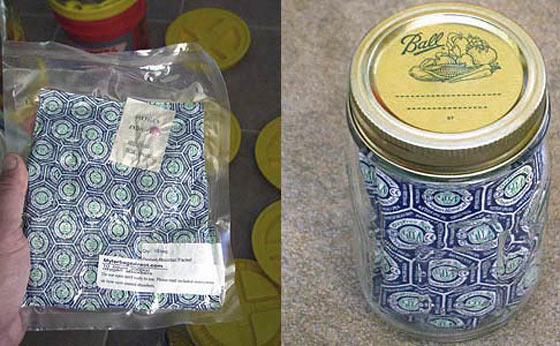
When storing foods like rice, beans, wheat, etc., a key factor for successful long term storage is to remove the oxygen from the environment.
Here’s why, and the size of the oxygen absorber you need.
Oxygen enables bad things to happen to your food over time.
These bad things include…
-Spoilage from organisms that will grow
-Molds
-Rancidity
-Oxidation of vitamin content
-Condensation
-Bugs
The result could be bad or spoiled food at a time when you will need it the most.
A solution to this problem is to use oxygen absorbers.
What is an oxygen absorber?
It is typically a packet consisting of powdered iron oxide. It is safe for foods, and is very effective if you have used the right amount in a sealed environment.
Earth’s air contains 21% oxygen. The proper quantity of oxygen absorbers in a sealed Mylar bag, or a sealed pail or can, will reduce the oxygen levels to .01%, effectively eliminating (minimizing) the risk of bad things happening to your food storage.
There is a caveat to effectiveness however. The container MUST be air-tight. Most people use Mylar bags to fit in their 5-gallon buckets.
The Mylar foil will provide an air-tight seal (if sealed properly) and the bucket will provide protection for puncture or rodents.
NOTE: You should check your new Mylar bags for leaks. Use a flashlight shining inside the bag in a dark room and look for any light escaping. Some may have small holes at a folded crease.
Oxygen absorbers themselves are shipped in a sealed bag. So, remember, once you open that sealed bag, the absorbers will start absorbing the oxygen of the air around it. So don’t leave them sitting around for long (try to keep it under 30 minutes) while they are ‘absorbing’ the oxygen in the room.
Have your food ready and already packed in the Mylar bags, ready to seal, before you open up the pack of oxygen absorbers.
Then, use what you need and save the rest in an air-tight container. You could use a vacuum sealer bag for the remaining O2 absorbers (probably the best way), or you might keep them in a canning jar with an air-tight lid (fill the remaining air space inside with rice which may help reduce the volume of O2 inside).
Oxygen absorbers are rated in “cc’s” (cubic centimeters).
The sizes of oxygen absorbers correspond to the amount of oxygen they absorb.
For example, a 300 cc oxygen absorber will absorb 300 cc’s of oxygen.
So the key to knowing how big of an oxygen absorber to use, is to know how much total air (oxygen) it will need to absorb…
…which is the ‘head space’ air plus the air that’s all around the individual pieces of food inside the Mylar bag or bucket, called void space.
To determine the total residual air that will remain in your storage container (sealed Mylar bag), you could apply a moderately complicated procedure and formula, or you could follow some general advice based on other people’s experiences and others who have run the formula as follows…
For foods like rice, beans, or wheat stored in a Mylar bag to be contained within a 5 gallon bucket, use 2000 cc’s of oxygen absorbers. This leaves a bit of a safety margin which is particularly important for larger size items such as beans because they have a bigger void space around them.
Given the value of your investment, it’s worth adding a bit more oxygen absorbers than necessary. While 2000 cc’s is enough (for a typical 5-gallon pail with Mylar bag filled with rice or wheat, etc.), 2500 or even 3000 cc’s will absolutely assure best results. It’s up to you.
What has been your experience?
http://modernsurvivalblog.com/survival-kitchen/what-size-oxygen-absorber-to-use/#more-24122
No comments:
Post a Comment
Note: Only a member of this blog may post a comment.